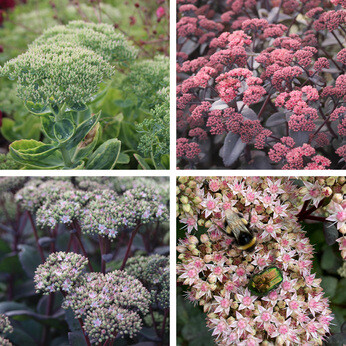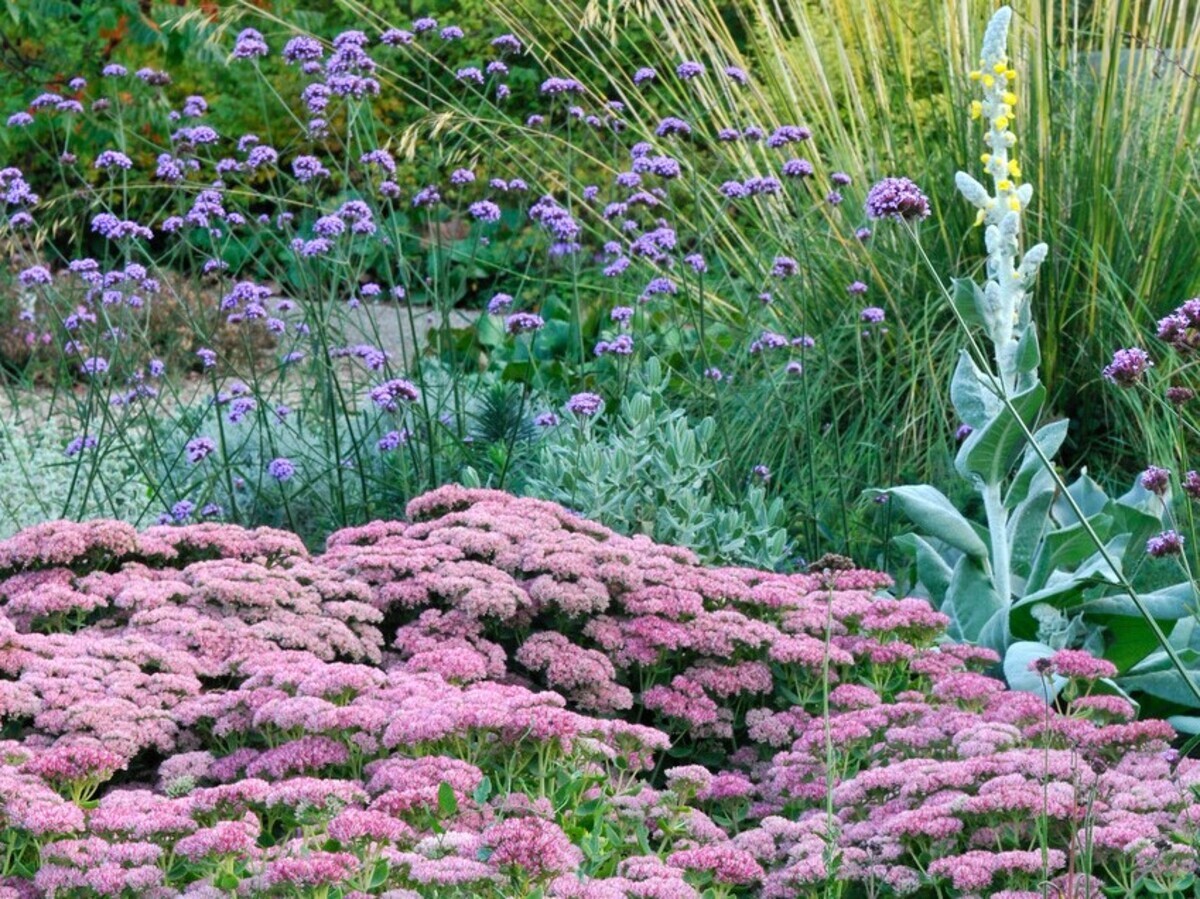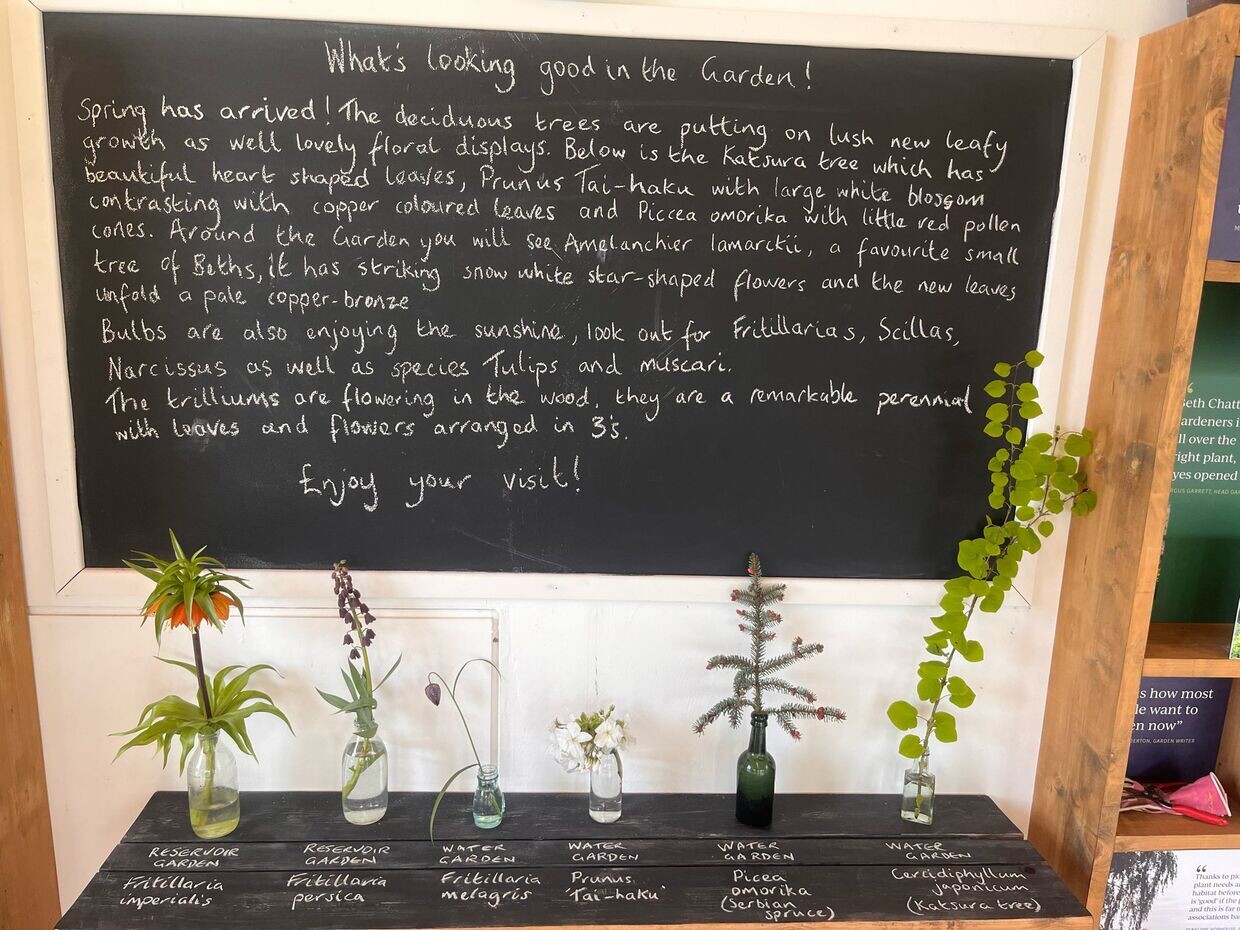Hylotelephium telephium (Sedum)

The month of August heralds the pinnacle of summer, sweltering days with cool evenings, a suggestion of slipping into an autumnal rhythm. In the garden, it might be imagined the show is over; however, a perennial coming into its own just now is Hylotelephium telephium (formerly Sedum). With succulent-like smooth glossy leaves, a plant within the Crassulaceae family originating from Europe to Russia to Eastern and Northern China, this plant is perfectly adapted for drier conditions, flourishing in the simmering August heat.
These low maintenance, drought tolerant plants flower with flat heads which are a mass of small starry flowers. Particularly appealing to both bees and butterflies, the flower heads act like landing pads to enable easy access to the nectar concealed within. Hylotelephiums come in a range of leaf and flower colour, from white flowers with delicate sage-green foliage to the richest mahogany- purple leaves with vibrant magenta flower heads. Size and form also vary depending on the cultivar, H. ‘Herbstfreude’, a very popular old variety introduced in 1955 and growing to 60cm tall by 40cm wide, versus the more diminutive H. ‘Bertram Anderson’ reaching only 15cm but with a more spreading habit of up to 30cm. To reduce size and delay flowering-time, give plants the Chelsea chop: this is achieved by cutting back plants in May by a third, extending the flowering season and removing the requirement to stake plants (How to do the Chelsea Chop). Hylotelephiums benefit from this treatment to reduce the flopping and snapping of large burgeoning flower heads, whilst additionally prolonging their flowering season into September.

Propagation of our hylotelephiums is undertaken in early June, by a form of cutting; pulling a piece of material much like a stick of rhubarb from the mother plant. Some roots will remain attached to the base, with nodes where new ones will form, the tip is removed to encourage energy to go into root production. This tip can also be material for a regular tip cutting but does take longer to root, two pieces of propagation material for the price of one! They will take six to eight weeks to be well rooted into their pots before being available for sale in time to enjoy their blooms and waxy foliage into late summer.

Hylotelephiums do require full sun and good drainage, perfect for gravel/dry gardens or a pot with added grit or gravel. Their structure lasts well into winter with old flowering stems turning lovely shades of caramel brown, and most importantly makes homes for overwintering beneficial insects such as ladybirds. These perennials warrant little attention; simply cut back to their new rosettes in spring, the old stems and flower heads make statements in dried flower arrangements. Generally, these perennials are pest and disease free, occasionally the grey ermine moth, Yponomeuta sedella causes some damage to leaves and flower buds with a protective but unsightly web, this problem is reduced with the afore mentioned Chelsea chop.

They combine well with other drought tolerant perennials such as airy Oenothera lindheimeri, (syn. Gaura lindhiemeri). The soft lemon foliage of Stachys byzantina ‘Primrose Heron’ would contrast well with the deep burgundy foliage of H. ‘Karlfunkelstein’. When planting, ensure you water in well. These plants will make nice clumps and should be divided after three years. Hylotelephium is a sustainable garden stalwart and a perfect plant for our current climate of extended drought periods.
To find out about our full range of hylotelephium, click HERE.

Written by Plant Senior Assistant Henrietta




Comments